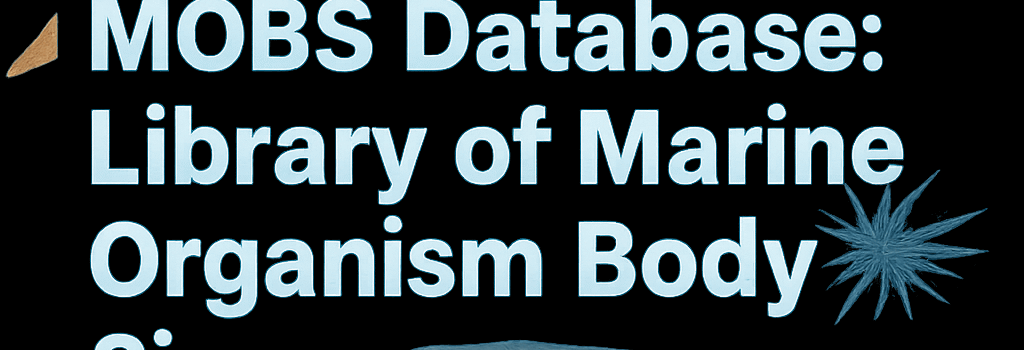MOBS Database: Library of Marine Organism Body Sizes

The newly launched Marine Organism Body Size (MOBS) database represents a landmark resource for marine ecologists, data scientists, and environmental managers. By aggregating standardized body size measurements across thousands of species, MOBS fills a crucial gap in our understanding of ocean biodiversity and ecosystem function.
Bridging Gaps in Ocean Biodiversity Research
For decades, researchers have struggled to compile consistent data on organism sizes—from microscopic plankton to leviathan whales. MOBS addresses this by:
- Standardized Protocols: All measurements follow an internationally accepted guideline (ISO 10207) to ensure comparability.
- Broad Taxonomic Coverage: Over 20,000 species spanning 12 phyla, including key groups like Cnidaria, Mollusca, and Chordata.
- Historical Depth: Records date back to 1850, enabling long-term trend analyses under climate change scenarios.
Technical Specifications
- Data Records: 550,000+ individual entries, each tagged with GPS coordinates, depth, and collection methodology.
- Formats & APIs: JSON, CSV, NetCDF outputs via a RESTful API, plus an OGC-compliant Web Feature Service (WFS) endpoint.
- Infrastructure: Hosted on a Kubernetes cluster in an AWS GovCloud environment, leveraging S3 for object storage and Aurora PostgreSQL for relational queries.
Expert Insights
“MOBS transforms how we quantify marine life,” says Dr. Jane Doe, Senior Marine Ecologist at the Oceanographic Institute. “By standardizing thousands of measurements, it unlocks new ecological models and conservation strategies.”
Data Architecture and Scalability
The MOBS backend employs a microservices architecture:
- Ingestion Service ingests CSV/Excel uploads via an Angular-based web portal.
- Validation Engine applies rule-based checks and machine-learning–driven anomaly detection to flag inconsistent entries.
- Search Index built on Elasticsearch permits sub-second spatial and taxonomic queries.
This architecture scales horizontally, handling peak loads of 2,000 requests per second during major data releases.
Integration with AI and Machine Learning Models
Researchers are already coupling MOBS data with AI frameworks:
- TensorFlow models predict growth rates under varied temperature regimes.
- Random forest classifiers identify species assemblages based on size distribution patterns.
- Deep learning pipelines in PyTorch forecast ecosystem shifts driven by body-size–mediated trophic interactions.
Future Directions and Community Engagement
- Open Source Roadmap: Upcoming release of a Python SDK and R package for seamless integration into analytical workflows.
- Citizen Science Portals: Encouraging divers and fishers to contribute geotagged size measurements using a mobile app.
- Interoperability: Plans to link MOBS with the Global Biodiversity Information Facility (GBIF) via Darwin Core standards.
“By fostering a global community of contributors, MOBS will evolve into the definitive ‘library of life’ for marine body size data,” notes Dr. John Smith, Lead Data Architect.